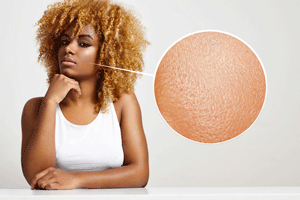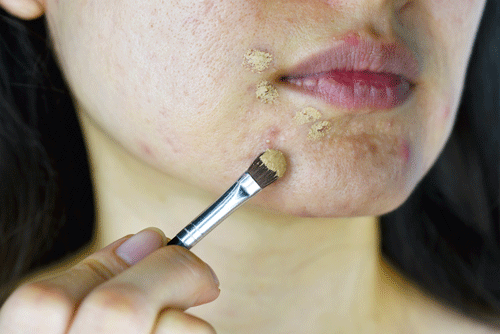There is a much misconception and misinformation about comedogenic and non-comedogenic products. We hope that after this post, you will be better informed.
All of our Melanopeel® products are truly non-comedogenic (non-pore clogging).
Our treatments aim at clearing oils, blackheads, whiteheads, impurities and debris from your skin.
This does not mean that other product lines labeled as non-comedogenic will not cause clogged pores. We explain more now.
In simple words, a comedogenic ingredient is one that “clogs pores” and can cause pimples. Skin pores are clogged mostly with the dead skin and sebum. But this clogging is not always noticeable quickly as it can take months to appear. Individual’s skin chemistry is the main determinant of product’s comedogenicity, so it highly varies from consumer to consumer.
By definition, non-comedogenic products are simply those products that are not likely to promote clogging of the skin pores. Any product with the label “Non-comedogenic” or “It will not clog pores” is simply a fluid marketing term.
Placing such labels on products does not actually mean that it is guaranteed to not clog your skin pores. For example, a product labelled as “oil-free” does not mean that it will not clog skin pores, but it just simply indicates that the formula used in this product is lighter.
The FDA has no defined list of non-comedogenic ingredients. There is also no standardized way of testing what comedogenic is. This term therefore is very subject to misuse for marketing purposes.

Fortunately, there are guidelines that can be used. There is a scale available called “comedogenic scale” that ranks oils and skin care ingredients based on their propensity to clog pores.
If you are susceptible to acne breakouts and blackheads, you should avoid highly comedogenic oils and ingredients ranked 4 or more on the comedogenic scale. A weakness of this scale is that it was developed by using animal skin for testing, and not human skin.
The comedogenic scale is only useful if you are exactly familiar with your skin type. This scale uses a numbering system ranging from 0 to 5. Here’s how the numbers rank on the scale:
- 0 – Would not clog skin pores at all
- 1 – Very low probability of clogging pores
- 2 – Moderately low probability of clogging pores
- 3 – Moderate probability of clogging pores
- 4 – Fairly high probability of clogging pores
- 5 – High probability of clogging pores
Based on this scale, non-comedogenic products can be defined as those that do not clog pores and have a comedogenic rating of 2 or less. And as you move from 0 to 5 on the scale the comedogenic potential becomes greater and there are more chances of clogging skin pores and having acne.

But there are so many factors involved in how a specific ingredient will impact your skin, so you cannot make an absolute prediction. As everyone’s skin is different, the product will behave differently in different people.
Factors like skin type, water intake, illness and environmental conditions can influence the way how creams and serums impact your skin.
Non-comedogenic is a misnomer, not only in a sense that non-comedogenic means non-pore clogging but also that companies use this term as a marketing tactic to attract customers.
With Melanopeel®, our products do the complete opposite of clogging your pores – we aim to decongest, resurface, and release sebum and debris from your skin.







